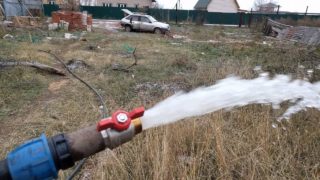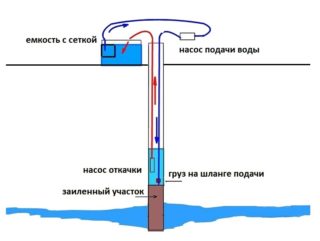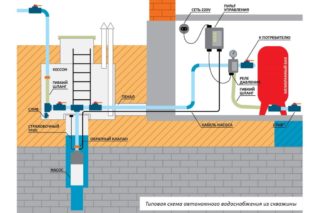For long-term operation without breakdowns, a water well requires qualified maintenance. If you cannot hire a specialist, you can take care of the water intake on your own.
Why do you need water well maintenance

The efficiency and duration of the serviceability of the hydraulic structure is determined not only by the correct installation, but also by the observance of the operating rules.
In whatever land the water intake is carried out, the smallest particles of soil inevitably fall into it. Mechanical impurities can negatively affect the operation of the pump, and chemical elements that are deposited on the walls of pipes and in pressure equipment, lead to rust, which becomes the cause of leakage of the connections.
Electricity voltage drops, which can lead to a violation of the insulation of the pump motor windings, have a negative impact on the operation of equipment.
To avoid expensive repairs, you need to systematically perform a preventive inspection of all elements of the system. It helps in detecting minor faults and eliminating them.
List of maintenance measures
- organoleptic water quality;
- water intake performance;
- pumping equipment;
- hydroaccumulator;
- automatic control system.
Periodically, it is required to carry out pumping to get rid of possible contamination and preventive flushing.
If the intake is operated in winter, seasonal preparation is required. The casing pipe is insulated to the level of soil freezing corresponding to the climatic zone. This will avoid freezing of the liquid in the column. You will also need caisson insulation, if available.
Pressure equipment check
It is carried out in the following sequence:
- Visual inspection of equipment. By eye, you can determine the integrity of the body and the tightness of all types of connections.
- Turning off the pump, opening the water intake valve and measuring the pressure in the system. The indicator should stop at zero.
- Checking the pressure in the hydraulic accumulator. This will require a car pressure gauge. The difference between the values when the pump is running and after it is turned off should not exceed 10 percent.
- Starting the pumping device and monitoring its operation. After reaching the pressure that is set on the relay, the pump must shut down.
- Re-checking the pressure in the network, but without water consumption. If the unit is operating correctly, the pressure switch arrow will be in the red zone corresponding to the maximum.
It is necessary to open the tap and make sure that the arrow on the relay has moved to the green mark, after which the pump turned on.
Pumping and preventive flushing

A just drilled or clogged well must certainly be pumped in order to clear it of crumbling soil or accumulated debris.
For work, you can use:
- downhole sucker rod pumping units - SSHNU;
- compressors with a pressure of 12 bar;
- submersible electric centrifugal pumping units - ESP.
The principle of operation of such tools is based on the fact that air or water supplied under pressure knocks out the liquid along with impurities to the surface.
Preventive flushing is only necessary when the well is used seasonally and at significant time intervals, since it becomes silted during stagnation. For structures in continuous operation, flushing is not required.
Recommended frequency
All operational work in an autonomous water supply network has its own terms:
- Every day, the physical properties of the water should be checked - taste, color, sediment and odor. With pronounced changes, a liquid analysis in the laboratory is required.
- Inspection of pipes and the shaft of a hydraulic structure is carried out every two years.
- It is recommended to check the filter and, if necessary, clean it every three months.
- The frequency of preventive inspection of pumping equipment for water wells is prescribed in the accompanying documentation of the device. Despite the recommendations, pressure devices, even if they work without malfunctions, must be inspected at least once every 6 months.
The frequency of pumping is determined depending on the water flow rate. The procedure is carried out within an hour.
The results and notes on the conduct of preventive examinations must be recorded in a special journal with the date. These records are used to identify probable malfunctions of both the pressure device and the hydraulic accumulator, and the well as a whole.









